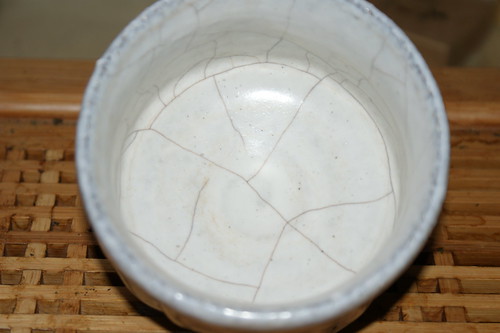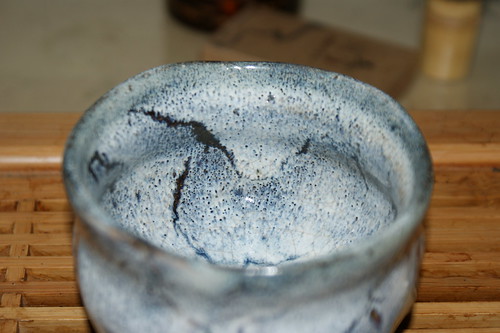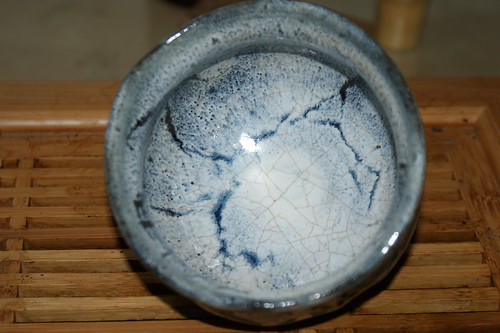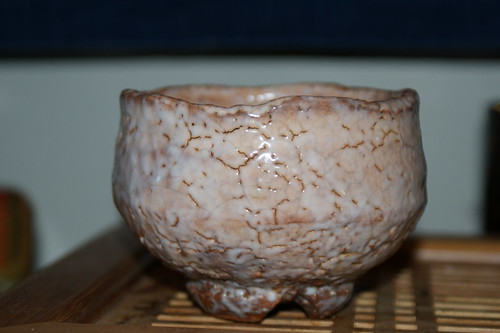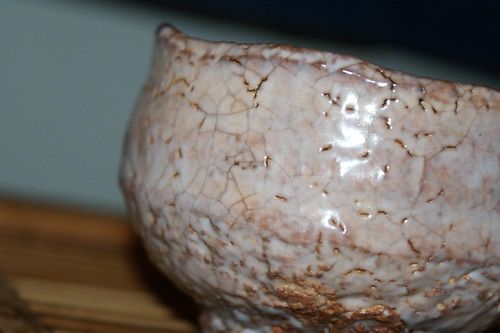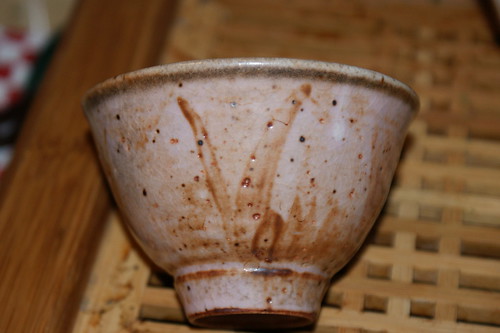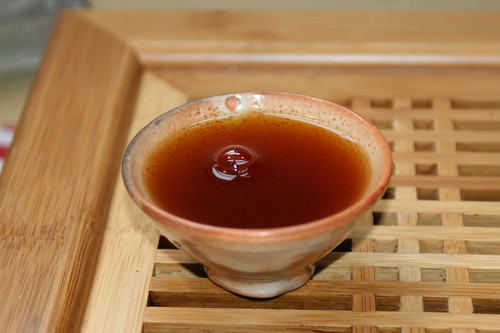This piece is fascinating in many ways. One is in part why it is dubbed frosting, it has an incredibly thick white glaze spread over it, and it undulates in such a way that it looks like frosting hastily applied to the cup. Especially since in a few area's the clay underneath shows through. That is not all this extra thick glaze, seems to do wonders for how it progresses through the seven stages of Hagi.
Any time I have seen cracks in a glaze on a piece, they are usually rather fine, so perhaps it makes it hard to see, but typically a crack runs into another crack, forming T's or X's, though this piece has cracks that run through a piece and dead end as pictured below.
Though the more this piece is used the better appeal it seems to have. The uniqueness that there are large patches of glaze practically untouched by the staining and the crazing. But the staining appearing on the outside seems oh so welcoming as seen by the first picture. I will be watching this piece develop with much hope, and is the piece I think of when I consider how extra rough clay Hagi pieces (Oni-Hagi) can produce some incredibly interesting effects.


